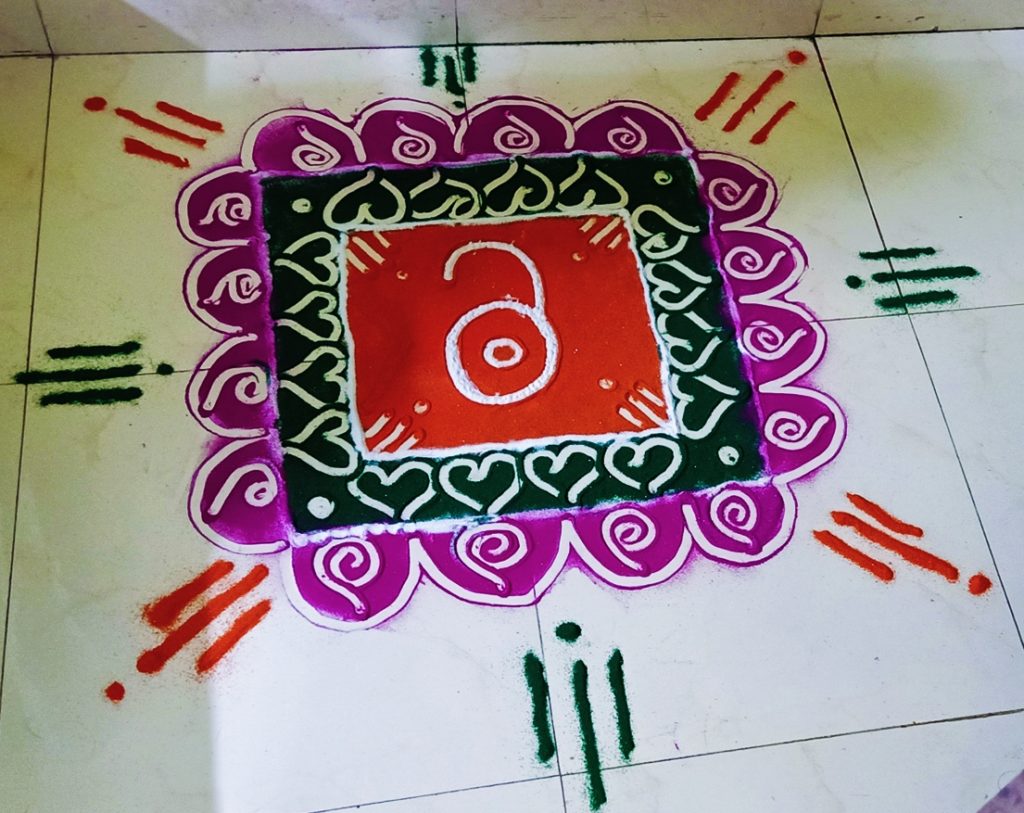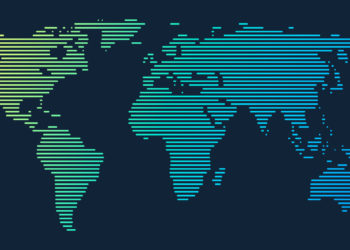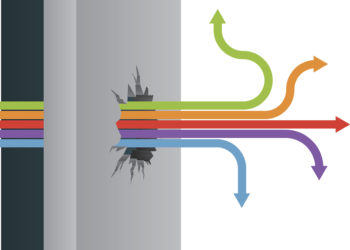Arianna Becerril García, Thomas Hervé Mboa Nkoudou, Vrushali Dandawate spoke at a recent Scholarly Kitchen webinar on global open access, hosted by Chef Siân Harris. This jointly authored post shares some key themes from the conversation and address some of the questions that came up.
The opportunity for researchers to share their findings and draw on the research findings of others is vital for researchers, policymakers and wider society. But all too often, the way that this process works is decided by relatively small numbers of countries and people –- often those based in the global North, in “elite” institutions or in large, commercial publishers.
Important voices can be missed and, as a result, important learning about what people have found already works around the world is not reflected in academia, policy decisions, and practice.
In a recent Scholarly Kitchen webinar, I was delighted to be joined by great speakers from three continents, who are all experts in open access with different perspectives. This post summarizes some of the key themes discussed by Arianna Becerril García, who is based in Mexico, Thomas Hervé Mboa Nkoudou, who is based in Cameroon, and Vrushali Dandawate, who is in India.

What are the key approaches to open access in your regions?
Arianna Becerril García is Executive Director, Redalyc, Chair, AmeliCA, Professor, Autonomous University of the State of Mexico and has a strong background in shaping open access policy.
In Latin America we have a non-commercial approach where scientific publishing belongs to academic institutions and not to large publishers. Even before the open access term was coined in 2002 we made such access the natural way of communicating research in Latin America.
This means that the institutions who are in charge of generating knowledge are also in charge of communicating it. Academic institutions, as well as governments, support journals that are driven by our faculty members as part of their academic work. That content is made available open access, so that everyone benefits from everyone’s investment.
In this ecosystem, we have a distributed investment by different stakeholders for editorial workflows, quality assurance, metrics, aggregation of content, and discoverability, among many other services. From my perspective, this is a very sustainable way to maintain this ecosystem.
Our approach is “science as a public good” rather than “science as a commodity”. In the latter approach, university rankings dictate the decision-making in universities and the future of publishing, publishing is mainly performed by commercial companies, research assessment is Impact Factor-based and open access is evolving through transformative agreements, with APCs (Article Processing Charges) playing a vital role.
We believe that, in Latin America, we have a healthier and better approach to achieve equity and diversity. However, there are challenges in terms of sustainability, to both keep the current investment and to have more investment to allow this ecosystem to be more competitive, more visible and to implement more innovation.
We also see a big challenge in terms of coexistence with commercial open access; we see journal publishing and the open access tradition being threatened by commercial strategies, for example APC-based open access to generate revenues. We saw inflationary practices with the subscription approach 20 years ago, and now we are seeing exactly the same phenomenon with the APC.
Recently Nature started to charge more than $11,000 for an APC. This is completely out of place for countries like Mexico or any other country in Latin America. And it is not about providing special waivers for us, because this is patronizing. We are looking for a systematic class participation in science, a systematic global conversation.
With current information technologies, we can really go towards the democratization of knowledge. Among various benefits, technologies enable the development of different publishing workflows that are more cost-effective. They can also improve the discoverability of content and contribute to a better research assessment. This is what we are doing in Redalyc and AmeliCA. From our perspective, it is a more sustainable and organic way to communicate scientific findings.
Thomas Hervé Mboa Nkoudou is a researcher in open science and digital humanities in Cameroon and involved in many open access and open science initiatives in Africa and beyond.
The importance of open access in Africa is so wide. Open access can increase visibility and assist with academic education. And it can help policymakers to read, contextualize and develop relevant policies, including around research done locally.
It is true that open access officially started in 2002 with the Budapest Open Access Initiative and this trend disseminated from the North to the South, with all these big organizations working to improve the open access situation in Africa. But it is only in the last five or six years that we have seen more endogenous initiatives emerging from our continent and led by Africans. Amongst them: AfricArXiv, Le Grenier des Savoirs, LIBSENSE, African Journals Online (AJOL). Recently I was really happy to see that Africa and Latin America agreed to closer collaboration around Open Science.
We still have a lot to do in terms of best practice of openness, archiving, publishing practices, etc. But to take advantage of the full potential of open access, it is very important for us, Africans, to have a common position, a common vision.
The challenges open access is facing in Africa are physical barriers with electricity issues, lack of access to equipment, internet connectivity, and the lack of infrastructure. We also have cognitive barriers, because a lot of people still lack skills related to open access, even sometimes librarians, and people are still alienated by the Impact Factor and university ranking.
Another big challenge in our context is the paucity of contextualized policies, although some countries like South Africa have a policy. The existing policies in Africa most of the time begin in Western organizations and are then replicated in our context, without any effort toward contextualization. It is really rare to see an initiative coming from Africa trying to design open access policies from our own perspective, from our own reality. Sometimes we see big organizations funding such activities, but it seems like our own decision makers and policymakers are not aware of the importance of open access, leading to a lack of policies or a big gap between policies and the reality of the context.
I think APC waivers are helpful for researchers from our context when they want to publish because the system is to try to publish in outlets with higher Impact Factors and many researchers cannot afford the APCs. But for local journals in Africa, for example in the case of Cameroon, they don’t have a lot of funding, so if you ask them to waive the APC they will ask you how will we sustain ourselves? So this issue is different according to the context from which you are approaching the question and you need to be careful.
Vrushali Dandawate is DOAJ Ambassador for India and Pakistan and also a Librarian at AISSMS College of Engineering, India. She is currently completing a PhD about open access in East Asia.
Adopting open access will give Asian researchers global visibility and lead to more citations from other countries’ researchers. Open access also helps developing countries’ librarians to build their collections.
There are currently 3,636 journals indexed in DOAJ from Asia and the Journals Online project [started by INASP in partnership in Asia with organizations in Nepal, Bangladesh, Sri Lanka, and Mongolia] shows there are other local open access journals there as well. There are 1,253 repositories registered on OpenDOAR from Asia. National-level digital libraries have been developed in India, Nepal, Sri Lanka, Kazakhstan, and Kuwait and local language open access databases are available.
However, there are not many open access policies in Asia. 82 open access mandates are registered on ROARMAP from Asia and as part of my PhD research, I have found that national open access policies have only been put in place in Cyprus, China and UAE. However, every Asian country’s government should frame a national-level open access policy, which will help with promotion of open access. Policies that are built for institutions need to be registered on ROARMAP so they can give global visibility of research.
Right now, India is not thinking of adopting Plan S. In many institutions where there are funder policies, they simply encourage submission in open access and it has been observed that authors are not following the institutional mandates regularly. I think, for promoting adoption of open access policies, institutional research department heads and librarians need to take the initiative to encourage researchers to follow the policies and support global visibility of Asian research.
There is a need for development of open access repositories from Asia and the library community is enthusiastic to develop and promote repositories. However, it has been observed that institutional repositories are not being widely used by researchers, and overall deposit levels remain relatively low. There is also too little Information Communication Technology (ICT) infrastructure for building repositories and too little support from governments.
Language is another an important issue. In some cases, the predominance of English in open access repositories may be a barrier in non-English-speaking countries.
There are also problems with lack of training and misunderstandings about open access in Asia. Many people still think that if they publish their article in an open access journal it is not valid, so this is still a problem here. And there is a need for support and training for scholarly publishing and developing open access repositories.
Slowly, people are getting to know what open access is and why it is useful. But no funding is available for advocacy programs and they still need volunteers to spread awareness. And there is a communication gap between decision makers and researchers.
Also, in Asia many people are working individually in each country through initiatives like ‘Open access India’, ‘Open access Nepal’, ‘Open access Bangladesh’. If all open access advocates from each Asian country came together to do something together for Asia, better progress could be made for the continent.
Another major challenge for Asia is the growth of publications because it is important to get academic credit so everybody wants to publish, but then this impacts the quality of the publications. If journals do not follow the standards, they become invisible and researchers will not submit papers to them.
Some journals struggle to meet technical publishing standards due to technical and financial issues. This is why DOAJ does not require journals to fulfill every publishing standard in order to be indexed. Journals that do not have the technical expertise or funding for things like DOIs or archiving should be helped to meet standards. This is why DOAJ is currently working with partners on a project to offer free or low-cost digital preservation to diamond open access journals – these are seen as the journals most at risk of disappearing from the web if institutional support for them is lost. It is hoped that this project will significantly increase the number of diamond open access journals that are preserved for the future.
What are the issues with language?
Arianna Becerril García
We work mainly with Spanish and Portuguese speaking countries. And every day we face challenging situations, but I would like us to remember that we are living in an era of information and new technologies. I come from a computer science world. We need to focus on developing different and better technologies, and not only for enabling multilingualism in science communication, but also for accessibility purposes.
And this is why, for example, requirements in machine readability like XML and JATS for journal publishing are so important.
Thomas Mboa
The thing is that English, French, Spanish, or Portuguese are colonial languages for us in Africa; we have our native languages too. Cameroon for example, is a bilingual country (French and English); since I am from the Francophone part of the country, education in schools is in French. This is a big barrier for Francophone Africans, since the ecology of knowledge available on the internet shows that a lot of the resources are in English. Many of my colleagues and researchers from other parts of Africa cannot read or use research resources when they are in English.
This is a big challenge and is contributing to the lack of visibility of the work we are doing here in other languages. We have some apps now that you can use to translate your work. However, it is not the same since you lose the sense of what you are saying while you’re translating.
Currently, we are losing a lot of our local, traditional knowledge due to the crossing over of culture. But open science can be a good way to work on the preservation of this, for example, by recording videos.
What are your thoughts on transformative agreements?
Vrushali Dandawate
I’m a librarian and we have some agreements with the publishers in India. The problem is funding, especially due to the current COVID health crisis. Publishers’ costs are rising and the libraries have reduced budgets. If there could be some negotiation between government and publishers then that would work well.
Arianna Becerril García
I see transformative agreements as the “best way” to consolidate commercial open access. The question for funders and the organizations that are subscribing those contracts would be: are they also directing funding flows to non-commercial open access? It is also a matter of balancing the market, preventing the new inflationary crisis that is coming based on APCs.
Regarding Latin America, we don’t have a great dependence on subscription-based journals, because a great number of Latin American researchers access content in regional databases and publish in Latin American journals, especially in Social Sciences and Humanities
We do have consortia that deal with subscriptions and APCs in different countries. However, these are also linked with the governments and institutions that are also sustaining open access.
What about indexing in commercial databases?
Arianna Becerril García
If we assume that the journals’ job is to communicate science, for me, the success of a journal should be about how they are communicating to the communities that are in need of the knowledge they publish. The misunderstanding about mainstream databases is based on the assumption that a journal should be indexed by Scopus or Web of Science to be considered of quality. We need to remember that quality relies on the strength of peer-review processes and the effectiveness of communicating knowledge and the capacity of them to reach the communities they serve.
For instance, Web of Science is not a comprehensive database for the science published in my region or even for some disciplines such as Social Sciences and Humanities. We need to rely on a more integral strategy to assess and discover science, we need to circulate knowledge effectively and efficiently to produce a vaccine, for example, to solve a public health problem. If knowledge is locked behind paywalls or it is indexed in proprietary databases, a great part of the applicability of knowledge is compromised or specific research communities miss the opportunity to generate new knowledge.
In line with the theme of this discussion, a recording of the webinar that inspired this post is due to be made public towards the end of next month.
Discussion
1 Thought on "Global Trends in Open Access: Themes from Africa, Asia and Latin America"
Thomas’ comments about how open access can help “policymakers to read, contextualize and develop relevant policies, including around research done locally” really resonated with me – but it’s only half the story. I have recently been talking with Education Sub-Saharan Africa (ESSA) https://essa-africa.org/. Their no 1 mission is to channel information to policy makers in Africa so they can make informed (and therefore hopefully better) decisions about improvements to their education systems. Their no 1 problem isn’t accessing information, it’s finding it. That’s because so much good research is published in poorly-resourced local journals or as reports posted on NGO websites and this stuff is very hard to find with search engines. With Policy Commons, we’ve just completed an effort that’s pulled together 45,000 policy reports from 168 NGOs based across Africa so they’re now not only easier to find, they’ll be safe from link rot. With ESSA, we’re now looking to see how we can use this collection to enrich the 3400 reports on education captured in their database. Because even if content is open, if it can’t be found it might as well not exist.



